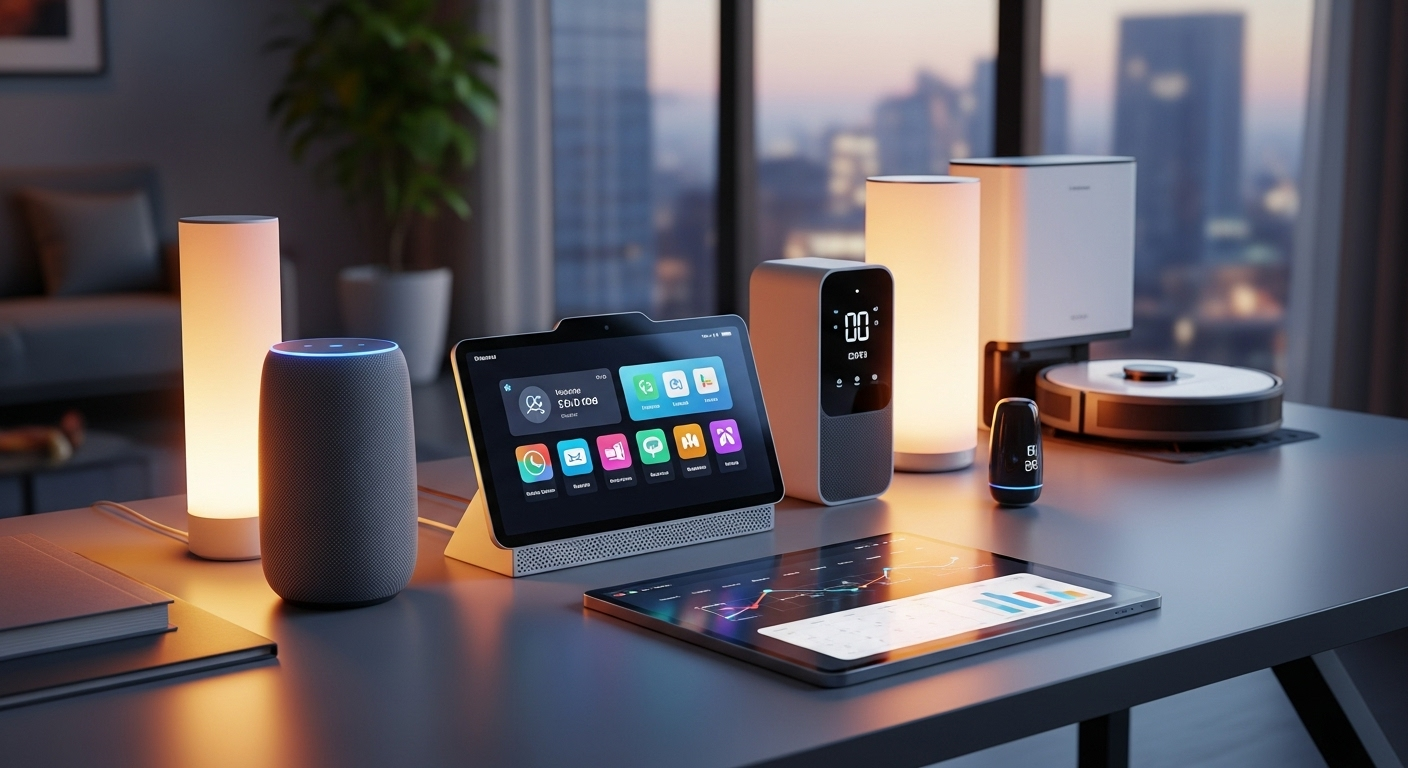In today's fast-paced world, the lines between home and work have become increasingly blurred, especially with the rise of remote and hybrid work models. Our homes are no longer just a place of rest but have transformed into our offices, gyms, and creative studios. This fusion of spaces presents a unique challenge: maintaining focus and productivity amidst daily household distractions. The secret to thriving in this new paradigm lies not in working harder, but in working smarter. By strategically integrating technology, you can automate mundane tasks, minimize distractions, and create an environment that actively supports your goals. This is where the strategic use of smart home gadgets to increase productivity becomes a game-changer, turning your living space into a high-efficiency hub. The Foundation: Building Your Productivity Ecosystem Before diving into specific gadgets, it's crucial to understand the backbone of any smart home: the ecosystem. This is the central nervous system that allows your devices to communicate with each other, enabling powerful automations and seamless control. Building a solid foundation ensures that your investment in smart technology yields the maximum return in productivity, rather than becoming a collection of disconnected, complicated gadgets. A well-planned ecosystem reduces "decision fatigue" by making complex actions simple. The heart of this ecosystem is typically a voice assistant and a central hub. These two components work in tandem. The voice assistant provides the intuitive, hands-free interface, while the hub acts as the translator, ensuring devices from different brands can understand each other. Choosing your primary ecosystem—be it Google Home/Assistant, Amazon Alexa, or Apple HomeKit—is the first and most critical step. This choice will influence which devices you purchase down the line, as compatibility is key to unlocking the true power of automation. A robust Wi-Fi network is the unsung hero of this entire setup. Smart devices are constantly communicating, and a weak or spotty connection can lead to frustrating delays and failures, defeating the purpose of convenience. Investing in a modern mesh Wi-Fi system can provide consistent, strong coverage throughout your entire home. This ensures that the command to start your coffee maker is received instantly and your "Focus Mode" lighting scene activates without a hitch, laying a reliable groundwork for every productivity-boosting gadget you add. #### The Command Center: Smart Displays and Voice Assistants A voice assistant is your personal butler, ready to manage your schedule, set reminders, and control your environment with a simple command. Devices like the Amazon Echo Show, Google Nest Hub, or Apple HomePod are the physical manifestations of this power. More than just speakers, smart displays offer a visual interface that enhances productivity. You can glance at your calendar, view a recipe while cooking, join a video call, or see who is at your front door without ever touching your phone—a notorious source of distraction. The true productivity magic happens when you move beyond simple commands and start creating Routines or Scenes. For example, a single command like "Hey Google, start my workday" could trigger a sequence of events: your office lights turn to a cool, bright white; your favorite focus playlist begins to play softly; and your smart plug turns on your computer monitor and desk fan. This removes the friction of starting your day, helping you transition into a state of deep work more quickly and consistently. #### The Network Brain: Smart Hubs and Reliable Wi-Fi While many devices can connect directly to your Wi-Fi, a dedicated smart hub like those from Aeotec SmartThings or Hubitat Elevation can take your automation to the next level. These hubs often support a wider range of communication protocols, such as Zigbee and Z-Wave, in addition to Wi-Fi. This opens up a vast universe of specialized sensors and devices that may not have Wi-Fi built-in, like motion sensors, door/window sensors, and temperature sensors. This deeper integration allows for more intelligent automation. For instance, a motion sensor in your office can be programmed to turn the lights on when you enter and, more importantly, turn them off after a period of inactivity to save energy. A door sensor on your office door could automatically trigger a "Do Not Disturb" status on your smart display or change your smart light bulb outside the door to red, signaling to family members that you're in a meeting. This level of environmental intelligence allows you to stay in your flow state without manual intervention. Master Your Morning: Gadgets for a Powerful Start How you start your day sets the tone for everything that follows. A chaotic, reactive morning often leads to a distracted and unproductive day. Conversely, a smooth, controlled morning routine can significantly boost your focus, energy, and overall output. Smart home technology excels at automating these morning rituals, helping you wake up refreshed and ready to tackle your most important tasks without wasting precious mental energy on trivial decisions. The goal is to create a "zero-friction" morning. Imagine waking up naturally to gently increasing light, the aroma of freshly brewed coffee already in the air, and a summary of your day's schedule waiting for you. This isn't a futuristic fantasy; it's an achievable reality with the right set of smart gadgets. By automating these initial steps, you conserve willpower for the challenging work that lies ahead, effectively giving yourself a head start before you've even had your first sip of coffee. #### Waking Up Naturally: Smart Lighting and Automated Blinds The jarring sound of a traditional alarm clock can instantly put your body into a state of stress. A far more productive and healthier way to wake up is to simulate a natural sunrise. Smart bulbs, like the Philips Hue or LIFX series, can be programmed to slowly brighten over a period of 15-30 minutes before your desired wake-up time. This gentle transition from darkness to light works with your body's natural circadian rhythm, signaling it to reduce melatonin (the sleep hormone) and increase cortisol, helping you wake up feeling more alert and less groggy. To take this a step further, pair your smart





